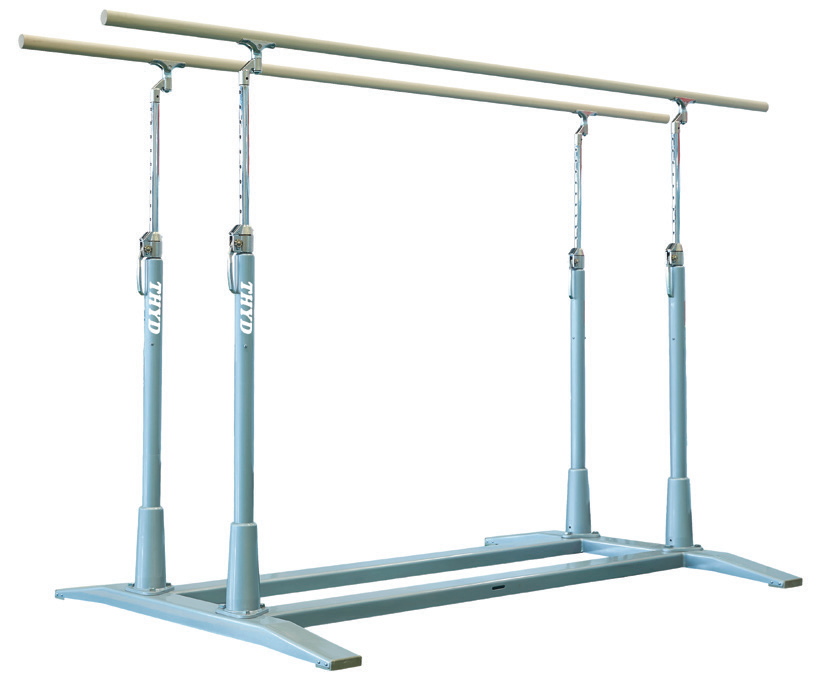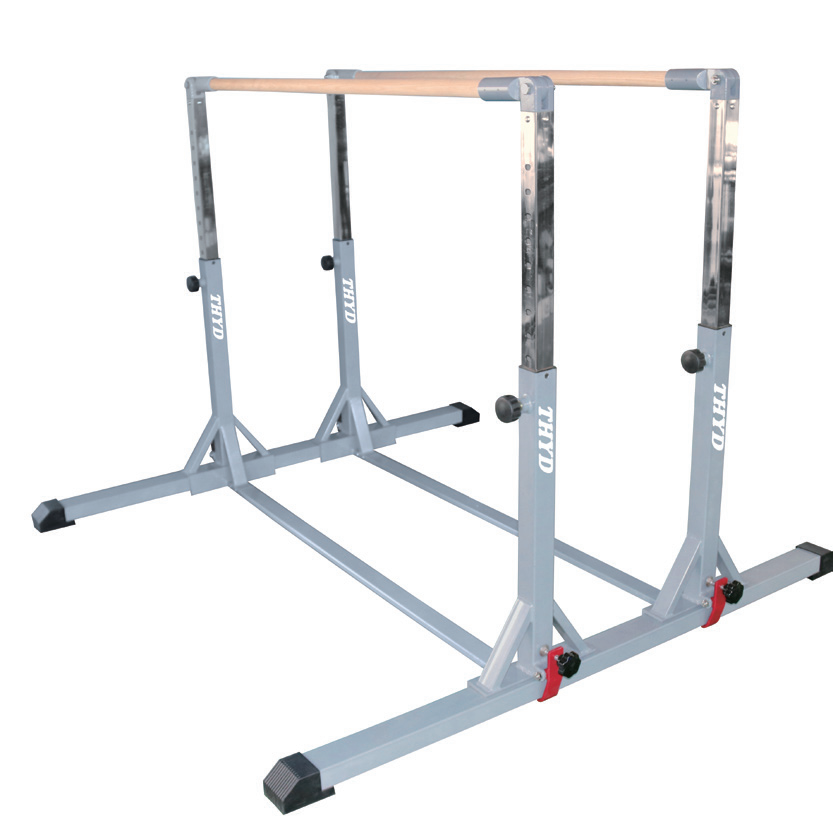Understanding Skill-Level Requirements for Gymnastics Bars
Fundamental movement demands by proficiency tier
New gymnasts need low-impact equipment built for beginner skills and static and controlled swinging. BROADER RAILS: (approximately 1.6-2 inches wide) w/ padded bases allow for gripping that builds body awareness. Medium development adds circling components that require some mid-bar flexion kips and mill circles that call for constant rail play and twisting resistance. Elite competitors require advanced technique bars that are engineered for quality dynamic torque and variation of spring tension response to support high release moves ±120 lb rotational forces.FeaturesSteel reinforced high grade aluminum rails provide backside strength and stabilityVarious spring tension options and choice of spring tension system with compatible easy install Power Pad systemStainless steel composite or graphite reinforced bars for superior performance and increased “life of the equipment” Each level has gymnastics bar requirements that must be met in order to ensure safe skill development.
Safety implications of mismatched equipment selection
Unsuitable gymnastics bars carry the potential for severe injuries since falls account for 48% of gymnastics injuries to kids in a study of sports safety. Gymnasts transitioning to more advanced flex-bar systems may have a lack of control during dismounts, while others performing aggressive repetitive skills on rigid hobby bars risk overuse. Differentials in rail diameters raise your chance of slipping beginners holding on to 1.1 inch Olympic grade rails slip 72% more times than when gripping 1.6 inch beginner-grade ones. Matching weight ratings is equally as important: under 150lb rated equipment destabilizes the structure when used for dynamic moves. Such validated measures of physical capacities circumvent these dangers by matching the equipment with biomechanical preparedness.
Gymnastics Bar Types and Structural Variations
Fixed-height vs adjustable gymnastics bars
High bars are for permanent training facilities where the athletes can safely perform high repetition, strength building skills. Adjustable units accommodate developmental progressions with. height, that can adjust from 4 to 5 feet and accommodate from. beginners to the advanced levels. Adjustable systems allow home garage installations and multi-user households, while a fixed set offers excellent vibration dampening on high-impact landings. Choose fixed units for dedicated training areas, and adjustable styles for developing home use.
Material comparisons: steel, composite, and wood variants
Professional construction — Stainless steel rules in the professional shop where 500+ lb capacity and under corrosion are necessary. The vibration absorbing properties of glass fiber composites are essential in providing that protection to the joints for high release velocity sports moves while the wood rails give a tactile sense of the ice every skater is looking for when ultimately bringing their new skills to routine. In wooden bars, temperature changes affect the sound more, and here good humidity control is necessary to avoid warping. As a global gymnastics equipment market report states, the use of composite in the home category is up 17% compared to a year ago.
Competition specifications versus home training models
Competition bars meet strict FIG specifications 10cm rail diameter, 180-250cm varying distance between bars, titanium rod cored rails. Home models have safety modifications, such as padded bases, wider ground contact for stabilization of the frame, and removable sections. Pro-grade friction texture can only be achieved by direct link polyurethane coating, and not with residential polyethylene finishes. And unlike institutional models, which need weekly torque checks, it comes in a home version with tool-free adjustments enabling caregivers to quickly perform safety checks.
Beginner Gymnastics Bar Selection Criteria
Optimal height and width configurations for fundamentals
To gain confidence and master the basics when learning to swing on a bar, it’s all about correct ergonomic design so you learn to swing on the best childrens gymnastics bars safely. For children 5 12, adjustable bars grow from 3.5 to 4.5 feet tall, so crawling, basic hangs, and later, knee circles can be practiced in stages. Width should match shoulder width (14 18 in.) to prevent overextension during mearsures such as casts. A 2023 analysis by the Gymnastics Safety Institute found that 78 percent of skill-development errors in beginners were the result of equipment that was too large or too small. Seek models that offer 6 12 inches of vertical adjustment and that have at least a 6-foot clearance zone around the apparatus to allow for dismounts.
Padding and grip considerations for new gymnasts
High density foam rails and base joints help prevent impact forces up to 40% during a fall. Textured silicone-based palm with grip resistance does the job better than chalk essential for high-rep pull-ups to save your hands from calluses. Dual layer rail wraps with thermoplastic rubber and nylon webbing delivers the most protection to the palm on the market for repetitive swinging. Keep in mind, non-slip base coverings should be able to hold up to more than 300 psi to resist movement and shifting during dynamic movements!
Top-rated beginner bars with growth adaptability
Premium training systems feature sequential growth adaptors allowing 3 5 years of continuous use through:
- Expandable width settings (16" to 24") for skill complexity progression
- Interchangeable rail textures (ribbed/smooth) for grip customization
- Load capacities 150% above user weight (minimum 250 lbs) to accommodate skill advancement
These bars often incorporate modular designs where additional tension springs (8 12 kN/m resistance) can be added as athletes advance to kips and glide swings. A 2023 equipment durability analysis showed adaptable bars reduced replacement costs by 62% compared to fixed models over a 4-year training cycle.
Intermediate-to-Advanced Gymnastics Bar Specifications
Durability requirements for complex maneuvers
More advanced maneuvers such as release moves and high-amplitude swings require different construction standards in gymnastics bars. Equipment needs to endure personal forces of over 600Ibs on dismounts and transitions and without warping or creating stress fractures. Tempered steel alloy joints and double-welded load points provide fatigue resistance limited by load, not the frame. Elite-level bar according to international testing standards, which has 15% superior shock absorption than regular bars by dropping tests of 250kg regularly over and over. These fatiguing thresholds become mandatory when performing releases like Tkatchevs and Jaegers which, if affected by equipment failure, could lead to a catastrophic incident.

Spring resistance dynamics in release moves
The ideal of flex in uneven and high bar affecting the physics of a release move action. Elite gymnasts need optimally damped energy rebound 10-15 cm deflection for advanced skills (Giengers, Kovacs). Too little flexion will limit the height to which it will fly, also making the catch less accurate during releases, while too much elasticity will result in unpredictable mid-course trajectories. The elite bars feature precision-tuned, hollow core, dual bearing rails that have been designed for perfect balance with optimal harmonic adjustments, and is also heavy duty to meet our high standards, while not exceeding FIG specifications.
Competition-grade rail diameters and textures
Exacting dimensional standards for competitive equipment are specified by governing bodies in order to uniform performance around the world. Women's uneven bars may have the same 4 cm rail diameter, but men's high bars have 2.8 cm precision-stainless steel rails coated with a polyester with a resin or vinyl finish. These textured applied coatings create 0.45-0.55 µm surface roughness units (Ra) as measured by profilometers - challenging the fine line that exists between reliable grip security while minimizing the frequency of grinding friction burn during multiple pirouette elements. All certificated frames are subject to impact testing and may not allow the surface to fail or the geometry to shift during any of these tests where the impacts are more than 18 N·m.
Space-saving designs for residential setups
The best home gymnastics bars save floor space with engineering (like wall mounted brackets or foldable bases), that maintains usual area size in rooms (<300 SF). The modular components are designed to stack vertically while storedï¾—key for apartments and other shared spaces where permanent installations are not an option. Wider bases with legs that retract and extend reduce footprint and prevent tipping during swings.
Weight capacity thresholds across skill levels
Weight limits are directly related to weight capacity of bar; 5ft beginner bars support ₠150 lbs (±5% tolerance), used small gymnasts during basic, simple moves and illustrations. Intermediate equipment adjusts up to 250 lbs to accommodate explosive skills such as dismountsï¾¾essential as advanced maneuvers generate impact forces 3x body weight (SAFE Kids 2024). Progressive load ratings let you match fitness level, without having to increase the upgrade to a new ball.
Multi-skill adjustability mechanisms
Height-adjustable rails (<0.5" increments) enable seamless transitions between foundational kips and complex giants. Dual-position grips broaden training versatilityï¾—simulating uneven bars when combined with parallel width configurations (±12" lateral shift). Spring-loaded couplings maintain tension stability during release moves, preventing rail wobble despite repetitive torque.
Maintenance protocols for home apparatus longevity
| Maintenance Task | Frequency | Key Benefit |
|---|---|---|
| Bolt torque check | Monthly | Prevents structural fatigue |
| Rail sanitization | Post-session | Eliminates grip-reducing residues |
| Padding inspection | Quarterly | Maintains impact protection |
| Joint lubrication | Biannual | Ensures smooth adjustments |
Weekly surface inspections detect microfractures in high-stress zones, while UV-protective coatings combat material degradation in sun-exposed setups. Follow manufacturer guidelines for tension recalibrations to sustain peak performance between 3-5 year service cycles.
Frequently Asked Questions (FAQ)
What factors should I consider when choosing gymnastics bars for beginners?
Consider the height and width configurations for fundamentals, padding and grip considerations, and growth adaptability features for skill progression.
How do I maintain gymnastics bars to ensure longevity?
Regularly check bolt torque monthly, sanitize rails post-session, inspect padding quarterly, and lubricate joints biannually. Follow manufacturer guidelines for tension recalibrations.
What are the advantages of adjustable gymnastics bars?
Adjustable bars accommodate developmental progressions with height adjustments ideal for beginners to advanced levels, making them suitable for home setups.
Table of Contents
- Understanding Skill-Level Requirements for Gymnastics Bars
- Gymnastics Bar Types and Structural Variations
- Beginner Gymnastics Bar Selection Criteria
-
Intermediate-to-Advanced Gymnastics Bar Specifications
- Durability requirements for complex maneuvers
- Spring resistance dynamics in release moves
- Competition-grade rail diameters and textures
- Space-saving designs for residential setups
- Weight capacity thresholds across skill levels
- Multi-skill adjustability mechanisms
- Maintenance protocols for home apparatus longevity
- Frequently Asked Questions (FAQ)


